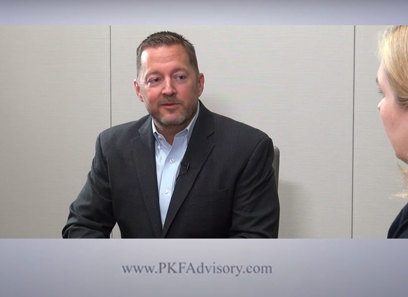Step-by-Step Guide to Understanding Purchase Price Allocation in Mergers and Acquisitions
Step-by-Step Guide to Understanding Purchase Price Allocation in Mergers and Acquisitions
Blog Article
The Essential Function of Understanding Purchase Price Allocation in Mergers and Acquisitions Explained
The procedure of Purchase Price Allocation (PPA) plays an essential role in the landscape of mergers and purchases, influencing not just financial reporting however likewise tax methods and stakeholder assumptions. A nuanced understanding of PPA can dramatically influence an acquiring company's monetary health and wellness, making its precise application vital for long-lasting success.
Meaning of Purchase Price Allocation
Purchase cost allotment (PPA) is an important process in mergers and purchases that includes distributing the total purchase rate amongst the different identifiable assets and obligations acquired in a transaction. This appropriation is crucial for properly showing the reasonable value of the acquired entity's assets and responsibilities on the annual report of the obtaining company.
The PPA procedure normally begins with the identification of all substantial and abstract possessions, in addition to any responsibilities presumed during the procurement. Concrete assets might include building, devices, and inventory, while abstract assets typically encompass hallmarks, patents, and a good reputation. Each possession and liability need to be measured and valued to make certain that the allowance reflects their reasonable market value at the purchase day.
The resulting appropriation effects economic reporting and can influence future incomes via amortization and depreciation of intangible properties. In addition, accurate PPA is vital for conformity with bookkeeping criteria, such as International Financial Coverage Criteria (IFRS) and Normally Accepted Audit Principles (GAAP) Consequently, a well-executed PPA process is essential to giving stakeholders with a clear economic photo of the deal's effect.
Significance of Accurate Appraisal
Precise appraisal is vital in the acquisition cost allowance procedure, as it straight affects the monetary health and wellness and coverage of the obtaining business. An incorrect appraisal can result in significant misstatements in financial declarations, influencing stakeholder assumptions and possibly leading to governing examination. Appropriate appraisal guarantees that the assets and responsibilities gotten throughout a merger or acquisition are videotaped at reasonable value, which is important for accurate financial coverage.
Additionally, accurate valuation help in recognizing the goodwill generated from the purchase, which is important for future impairment screening. Stakeholders, consisting of investors and experts, depend on the accuracy of these numbers to examine the company's efficiency and make notified decisions. Imprecise appraisals might lead to overpaying for a procurement, resulting in diminished returns and a lack of count on from investors.
Furthermore, the integration procedure depends on accurate evaluations to efficiently allocate resources and take care of the recently incorporated entity. Ultimately, the relevance of precise evaluation in purchase cost allocation can not be overstated; it lays the structure for transparency, operational performance, and long-term calculated success within the joined organization.
Tax Obligation Ramifications of PPA
In mergings and acquisitions, comprehending the tax obligation implications of purchase rate allocation (PPA) is necessary for both the getting company and the target entity. PPA figures out just how the total purchase cost is distributed among various possessions and responsibilities, which considerably impacts the tax obligation commitments of both events involved.
The allotment directly affects the tax obligation deductibility of abstract and substantial assets. Assigning a higher part of the purchase price to depreciable or amortizable possessions can generate significant tax obligation advantages, enabling the obtaining business to recuperate expenses over time with depreciation or amortization deductions. Conversely, allocating too much to a good reputation, which is not amortizable for tax obligation objectives, may result in higher gross income in the future.
In addition, the therapy of any type of pre-acquisition obligations can influence the tax effects for both celebrations. Misallocation or misunderstanding of these assets can result in unforeseen tax obligation obligations, audits, or penalties. Performing an extensive analysis of tax obligation implications throughout the PPA process is critical to maximize financial end results and guarantee conformity with suitable tax legislations. A strategic technique to PPA can ultimately boost the overall value originated from a merger or procurement.
Conformity With Financial Requirements

Entities involved in M&An activities must carefully review the fair worth of recognizable abstract assets, tangible assets, and responsibilities connected with the acquired entity. This analysis should be grounded in robust methods, such as market, revenue, or cost methods, making sure that the allocations reflect the economic reality of the deal.

Best Practices for PPA Application
Efficiently browsing the acquisition rate allocation (PPA) process needs the application of finest techniques that simplify assessment and enhance accuracy. One vital method is involving knowledgeable valuation professionals who are well-versed in both financial and operational aspects of the target company. Their competence is crucial for figuring out reasonable worths for identifiable possessions and obligations.
Another best practice involves thorough due persistance. Collecting thorough information on the target's possessions, obligations, and functional metrics enables for a much more accurate allotment of purchase rate. In addition, developing a robust framework for analyzing abstract possessions, such as brand worth and client relationships, is necessary to guarantee that all relevant variables are taken into consideration.
Integrating effective interaction among stakeholders, consisting of financing, legal, and functional teams, can further boost the PPA process. Regular updates and joint discussions facilitate a shared understanding of appraisal methodologies and presumptions.
Finally, keeping paperwork of the rationale behind assessments and allotments is crucial. This not just aids in compliance with accounting requirements but likewise works as a recommendation for future audits or disputes. By sticking to these ideal practices, companies can accomplish an extra accurate and reliable PPA process.

Conclusion
To conclude, recognizing purchase price allowance is crucial in mergers and acquisitions, as it directly affects economic coverage, tax responsibilities, and integration methods. Accurate assessment makes certain compliance with financial standards such as GAAP and IFRS, promoting depend on amongst stakeholders. Carrying out ideal techniques in PPA not just boosts the economic wellness of the acquiring company but also adds to successful transaction results. Therefore, an extensive technique to PPA is crucial for efficient administration of M&An activities.
Report this page